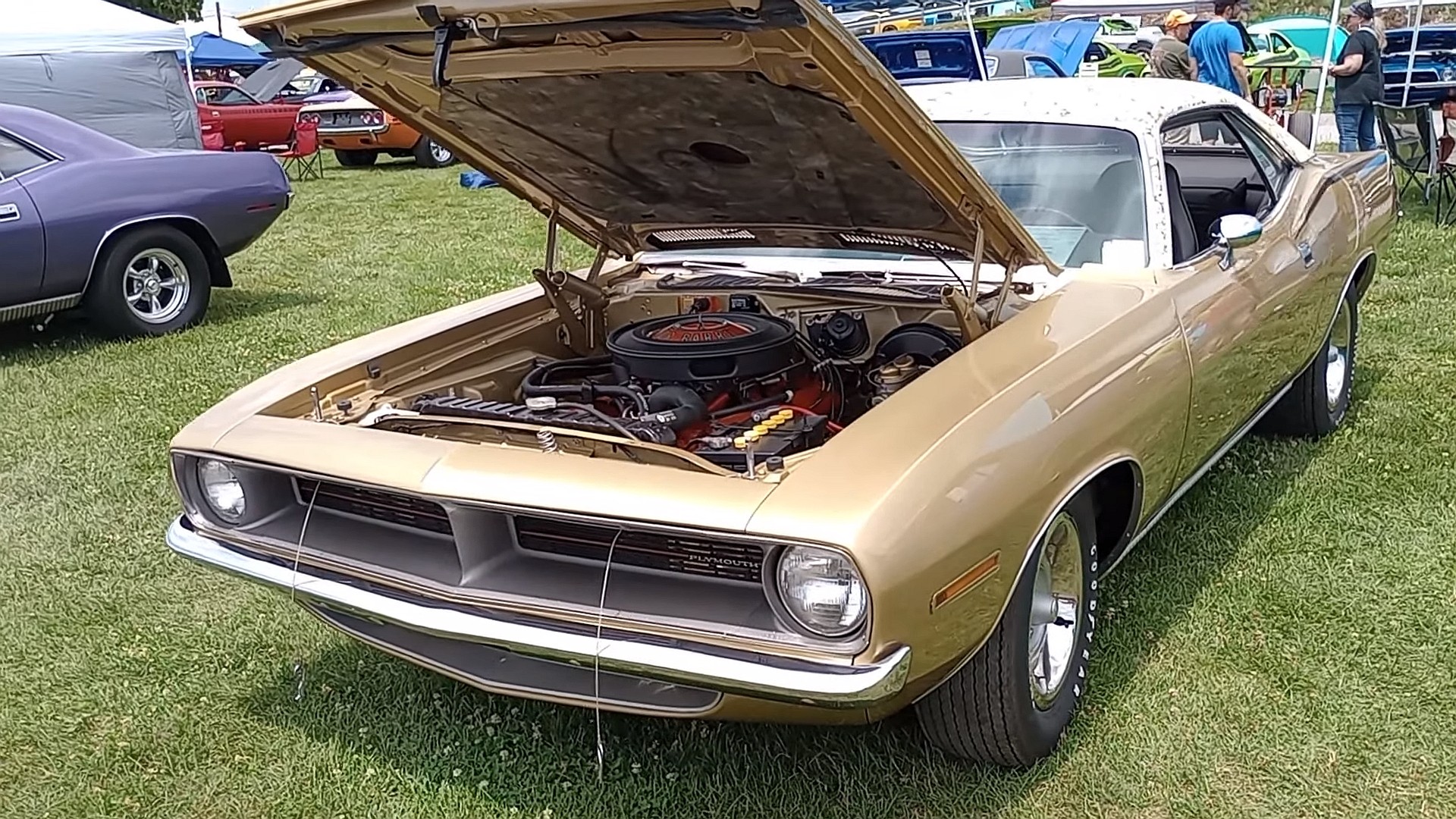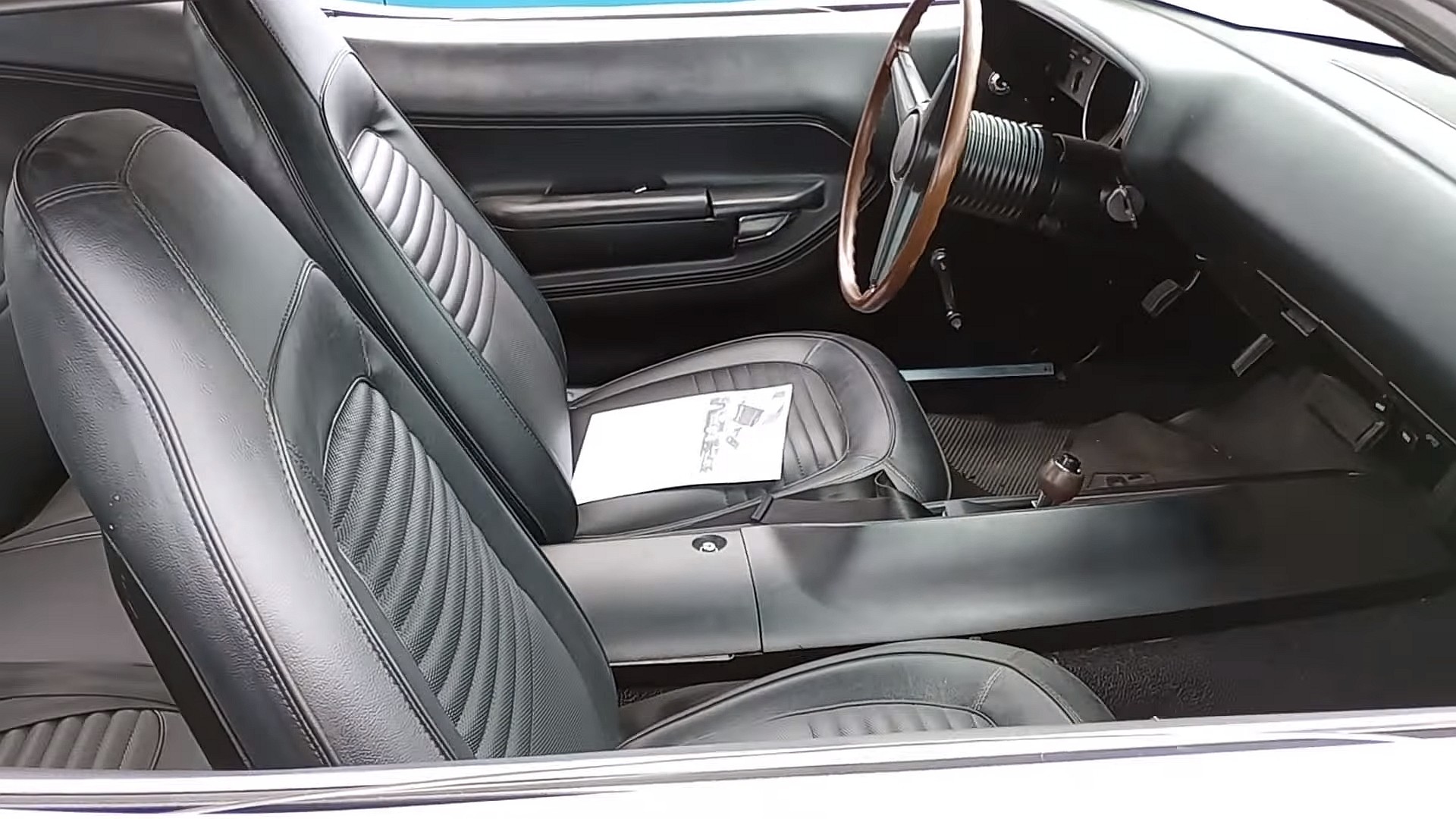Introduced for the 1970 model year, the third-generation Plymouth Barracuda is one of the most desirable muscle cars from the golden era. All due to its decidedly aggressive appearance and optional big-block V8 power.
Sure, the Barracuda was also available with a pair of inline-six mills and small-block V8s, but it’s the big-block units that turn it into a proper muscle car. The 383-cubic-inch (6.3-liter) B-block came with 335 horsepower on tap, while the four-barrel 440-cubic-inch (7.2-liter) RB delivered 375 horses.
The Barracuda also got a six-barrel version of the 440, good for 390 horsepower, while the range-topping 426-cubic-inch (7.0-liter) HEMI V8 sent 425 horsepower to the rear wheels. Naturally, the latter is the most desirable mill. Not only because it’s the most iconic and powerful but also because the HEMI is a rare powerplant.

In 1970, only 666 of the 48,867 Barracudas produced left the assembly line with the HEMI V8. In 1971, total production decreased to 16,492 examples, while HEMI deliveries accounted for only 114 cars. Not surprisingly, pristine hardtops are fetching around $500,000 while the extremely rare convertibles (14 in 1970 and seven in 1971) change hands for more than $1 million.
But it’s not just the 426 HEMI that commands big bucks. 440-equipped Barracudas are also hard to find and expensive. Some options are also rare and desirable. The Mod Top you see on this FY4 Gold 1970 Cuda is one of them.
Essentially a vinyl top with a colored, floral pattern, the Mod Top was offered for only a couple of model years. Introduced for 1969, it didn’t make it past the 1970 model year due to slow sales. As a result, it’s a relatively unknown option, but it’s decidedly groovy and desirable among the Mod Top Mopar crowd.
What’s the story behind this psychedelic-looking top? Well, it was conceived at a time when Chrysler wanted a younger audience for its pony cars. The company also wanted to attract more women into dealerships and thought a floral design would do the trick.
And it wasn’t just the top that was available with the colorful pattern. Chrysler also offered a matching Mod Interior option for the seats. Plymouth offered the special top on the Barracuda and Satellite, while Dodge introduced it on the Dart, Coronet, and Super Bee.

These tops were available in various colors and matched the car’s paint scheme. The wild-looking vinyl was manufactured by a company that made picnic tablecloths and shower curtains, as Chrysler didn’t find a way to prevent the material from fading prematurely.
The Mod Top was also controversial initially due to the ads ending with “See your nearby Plymouth dealer. He has a whole mad, mod story. He’s fond of women, too.” Released right in the middle of the women’s liberation movement, the ad was deemed sexist, and Plymouth changed the reference to “he’s out to win you over, too.”
Although the Mod Top option was only $12.45 more expensive than the regular vinyl top (that’s about $102 in 2023 money), the floral roof didn’t catch on. Dodge and Plymouth reportedly sold only 2,900 cars combined with the Mod Top over two model years. And because some of them sat on dealer lots until they got regular vinyl tops, far fewer than that soldiered on into the 21st century.
The 1970 Plymouth Cuda is one of the rarest of the Mod Top Mopars, with only 17 units sold. And only one of these cars got the mighty 426 HEMI under the hood. The gold example you see here is not a big-block car, but the color and drivetrain combination probably makes it unique as well. What’s under the hood, you ask? Well, this Cuda left the factory with a four-barrel 340-cubic-inch (5.6-liter) V8 rated at 275 horsepower.
But while it might not be that impressive under the hood, this Cuda is a true gem all around. That’s because it went through a thorough restoration and still rocks a numbers-matching V8 and automatic transmission. It was recently showcased at the Chrysler Nationals, and you can check it out in the video below.
